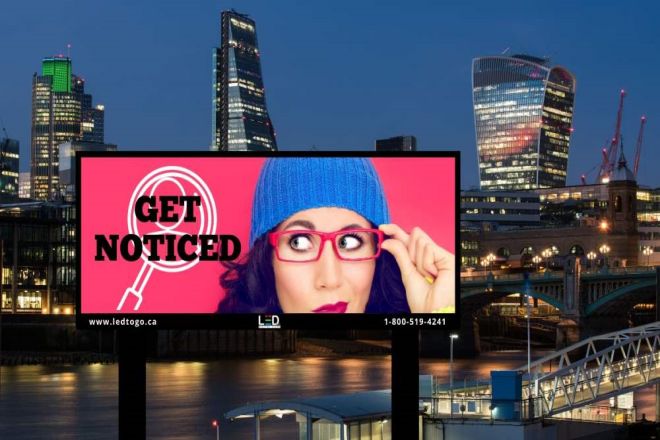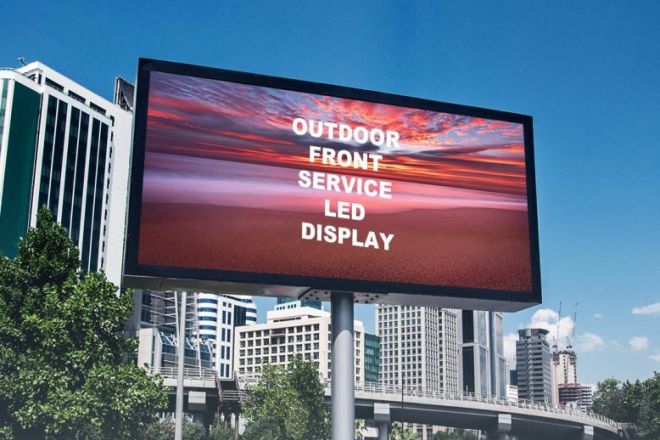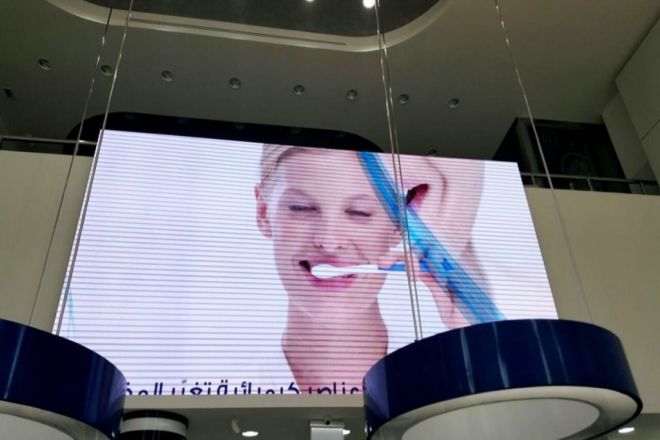Introduction

Saudi Arabia, an important country in the Middle East, is known for its unique geographical location and climatic conditions.
In this vast land, LED display screens, as an important information dissemination and visual display tool, are gradually showing their indispensable value. However, Saudi Arabia’s climatic conditions, especially the characteristics of high temperature, dryness, and dust, pose special challenges to the selection and installation of LED displays.
This article aims to discuss what kind of LED display screen is suitable for Saudi Arabia, focusing on analyzing the impact of climate factors on the display screen selection and briefly analyzing the original installation distribution in the region.
1. Analysis of climate conditions in Saudi Arabia

Saudi Arabia, a vast land in the Middle East, is famous for its unique tropical desert climate. This climate type brings high temperature, dryness, and sandy and dusty characteristics to Saudi Arabia, and these characteristics have a profound impact on the selection and installation of LED displays.
First, tropical desert climates are typically characterized by persistent high temperatures. In Saudi Arabia, summer temperatures often climb above 40°C and sometimes even exceed 50°C. Such a high-temperature environment poses a great challenge to the heat dissipation performance of LED displays.
If the heat dissipation design of the display is not reasonable, or the material cannot withstand high temperatures, the device can easily malfunction or even be damaged due to overheating.
Therefore, when choosing an LED display screen, you must pay attention to its high-temperature resistance to ensure that it can still operate stably in a high-temperature environment.
Secondly, the dry climate is also a distinctive feature of Saudi Arabia. Due to the lack of precipitation, the air humidity is very low, which makes static electricity problems particularly acute. Static electricity may cause damage to the electronic components of the LED display, affecting the display effect and overall performance.
Therefore, in dry climate conditions, LED displays need to have a good anti-static design to ensure their stable operation.
Finally, sand and dust are another climatic feature of Saudi Arabia that cannot be ignored.
Frequent sandstorms not only inconvenience people’s daily lives but also raise the requirements for the cleaning and maintenance of LED displays. Sand and dust accumulated on the surface of the display screen will not only affect the display effect but may also enter the interior of the display screen and cause damage to components.
Therefore, when choosing an LED display, you should consider its dust-proof performance and choose products with good sealing and easy cleaning.
2. Choose the appropriate LED display protection level according to climate characteristics.

Saudi Arabia’s unique climate conditions place special requirements on the selection of LED displays. In high-temperature, dry, and dusty environments, it is particularly important to choose an LED display with an appropriate protection level.
First of all, for high-temperature environments, the high-temperature protection level of LED displays is crucial. Thermal dissipation performance is a key factor in evaluating the display’s high-temperature protection capabilities.
An efficient heat dissipation design can effectively reduce the operating temperature of the display and reduce the risk of the device overheating. At the same time, the application of high-temperature-resistant materials is also an important measure to ensure the stable operation of the display screen in high-temperature environments.
These materials can withstand high-temperature corrosion, ensuring that the display can still function normally under extreme heat conditions.
Secondly, the choice of dust protection level cannot be ignored. Frequent sandstorms in Saudi Arabia pose great challenges to the cleaning and maintenance of LED displays. Therefore, choosing a display design with good sealing can effectively prevent sand and dust from entering the interior of the display and protect its internal components from damage.
At the same time, the easy-to-clean design also allows users to quickly remove sand and dust on the display surface after a sandstorm and restore its display effect.
In addition, waterproof and UV protection capabilities are also important factors to consider when choosing an LED display. Although rainfall in Saudi Arabia is relatively light, occasional rain can still cause damage to displays. Therefore, choosing a display with a waterproof function can ensure that it can still work normally in rainy weather.
At the same time, UV protection is also the key to ensuring the long-term stable operation of the display. Strong ultraviolet radiation may cause damage to the material and color of the display screen. Therefore, choosing a display screen with an anti-UV function can extend its service life and maintain good display effects.
3. Analysis of the original installation distribution of LED display screens in Saudi Arabia
The LED display installation distribution in Saudi Arabia mainly shows the following characteristics.
First of all, the installation distribution is mainly concentrated in commercial areas, public places, and major event sites. In commercial areas, such as bustling shopping malls and commercial streets, LED displays are widely used for commercial publicity, brand display, and product promotion.
These displays are usually installed in conspicuous locations, such as store entrances, the center of squares, etc., to attract the attention of pedestrians. In public places, such as airports, stations, and parks, LED displays are mainly used for information release, announcements, and cultural promotions to provide citizens with convenient information services.
In addition, at major events, such as sports events, cultural festivals, etc., LED displays have also become an important visual display tool used for live broadcasting of games, playing promotional videos, etc.
Secondly, some installation cases in Saudi Arabia fully demonstrate the application effects of LED displays in different places. For example, in shopping malls, large LED displays are used to display merchants’ promotions, new product launches, and other information, providing shoppers with a wealth of shopping options.
In hotels, LED displays are used to create an atmosphere, enhance brand image, and provide guests with a better stay experience. In sports venues, high-definition LED displays bring a shocking viewing experience to the audience and make the game more exciting.
However, although the LED display installation distribution in Saudi Arabia has achieved certain results, there are also some problems and shortcomings. First, uneven distribution is a prominent problem. In some areas, the installation density of LED displays is high, while in some remote areas or sparsely populated places, there is a lack of corresponding installations.
This leads to limitations in information dissemination, which cannot fully cover the entire country. Secondly, maintenance difficulties are also a problem that needs to be solved. Due to the harsh climate conditions in Saudi Arabia, LED displays are prone to damage and contamination during long-term use. Insufficient maintenance work may cause the display to malfunction or reduce the display effect, affecting its normal use.
4. Development trends and suggestions for LED display screens in Saudi Arabia

Saudi Arabia’s LED display industry is showing a booming trend, and future development trends will mainly revolve around technological upgrading and application field expansion.
In terms of technology development trends, more efficient heat dissipation, higher protection levels, and smarter management systems will become important directions for industry development.
In view of the high temperature, dryness, and dusty climate characteristics of Saudi Arabia, LED displays need to continuously improve their heat dissipation performance to ensure that the equipment can operate stably in high-temperature environments.
At the same time, higher protection levels will also become the key to product design to resist the erosion of sand, dust, and ultraviolet rays.
In addition, with the continuous development of the Internet of Things and big data technology, intelligent management systems will become standard equipment for LED displays, enabling remote monitoring, fault warning, and intelligent maintenance of equipment, as well as improving management efficiency and service life.
In terms of application field expansion, Saudi Arabia’s LED displays will further penetrate into many fields, such as cultural tourism, urban publicity, and transportation information.
As Saudi Arabia attaches great importance to and develops the cultural tourism industry, LED display screens will become an important tool to display local cultural characteristics and tourism resources.
At the same time, LED displays will also play an increasingly important role in urban publicity and traffic information, providing citizens with convenient information services and improving the intelligence level of the city.
For the future installation of LED displays, we make the following suggestions: First, the climate characteristics of Saudi Arabia should be fully considered, and LED display products with efficient heat dissipation, high protection levels, and intelligent management systems should be selected.
Secondly, in terms of layout, reasonable planning should be carried out according to the needs and characteristics of different regions to ensure the coverage and effect of information dissemination. Finally, it is also crucial to strengthen maintenance management.
A sound maintenance system should be established to regularly inspect and repair the display to ensure its normal operation and good display effects.
Conclusion
To sum up, when selecting and installing LED displays in Saudi Arabia, they should fully consider climate factors, rational layout, strengthen maintenance and management, and pay close attention to industry trends and technological developments.
Only in this way can we ensure that LED displays can maximize their value in Saudi Arabia and make positive contributions to local economic and social development.
Finally, if you want to know more about LED displays, please get in touch with us.
